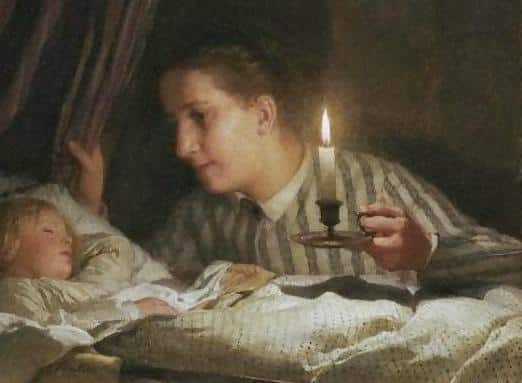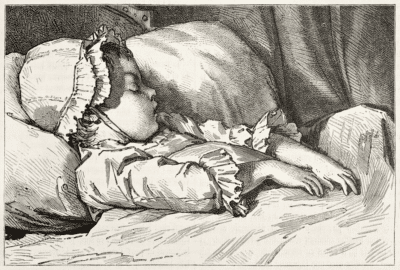|
Listen To The Article
|
Our ancestors’ homes usually were heated by wood-burning stoves. While any wood stove will keep a certain space warm, the ability to heat a whole house – particularly one that is two stories — diminished with distance and range.
Sitting next to a fire is nice when the weather outside is -30 degrees Fahrenheit, but if you’re sleeping upstairs you’re going to feel far less heat and far more cold.
While some homes had the luxury of a second story fireplaces, most did not. As a result, our ancestors had to improvise numerous solutions to stay warm at night.
Some of these solutions were simple and some more complex. Some were temporary, while others were more permanent. Many of these solutions were used in combination on particularly cold nights. Still, our ancestors found some unique and even weird ways to stay warm at night when sleeping.
1. The “grate.”
Homeowners would cut a hole between the first and second floor and insert a grate that would allow the hot air from below to rise into the second floor. It was far from forced-air heating, but it did offer some relief.
2. The hot-bed pan.
Another solution was to take hot coals from the fire and insert them into a covered pan on the end of a long wooden handle and rub it over a mattress before sleeping.
It brought some wood smoke into the bedroom briefly, but that was and still is common in any home heated by wood. The heat was temporary, yet it took the edge off a cold bed when first turning in.
3. The “nightcap.”
If you’ve ever slept in a cold tent during winter, then you know the need for a “nightcap.” This was a head covering that could be a knitted cap or, in Artic climates, a fur cap. When the weather outside is frightful, keeping your body warm is only half the battle. A stocking cap or “nightcap” made a big difference.
4. Layers on layers of insulation.
Layering is a common concept for anyone in winter, and layers of sheets, blankets and quilts made a sleeping arrangement warm and warmer. Goose down quilts were a luxury and often a necessity on bitterly cold nights.
5. Sleep with the dog.
The shared body heat from a pet can help keep a bed warm at night — and the dog appreciates it, too.
6. Night clothes beyond pajamas.
Most pajamas are made from a thin, lightweight material that serve more as a modest way to sleep.
Harness The Power Of The Sun When The Electricity Goes Out…
Our ancestors didn’t mess around. Their night clothes were often heavyweight combinations of wool and thick, cotton flannel.
7. Snuggling.
Families often slept together in the same bed, especially on cold, winter nights. The human body radiates heat at an average of 98.6 degrees Fahrenheit, and a combination of people in the same bed allowed the body heat to be shared.
8. Hot iron.
This is potentially dangerous, but hot pieces of iron were sometimes heated on the top of a wood-burning stove or in a fireplace and then placed into a metal bucket. The bucket was then brought to the bedroom and placed on the floor or even under the bed. The radiant heat from the hot iron lasted for hours and helped to bring some added heat to a cold bedroom.
Of course, when all else failed, it was likely that a family would sleep downstairs in closer proximity to a stove or fireplace. This was a somewhat radical move, but when temperatures plunged far below zero, it was sometimes the only alternative.
Do you know of other ways our ancestors kept their house warm at night during frigid temps? Let us know in the section below:
Harness The Power Of Nature’s Most Remarkable Healer: Vinegar
 Off The Grid News Better Ideas For Off The Grid Living
Off The Grid News Better Ideas For Off The Grid Living





